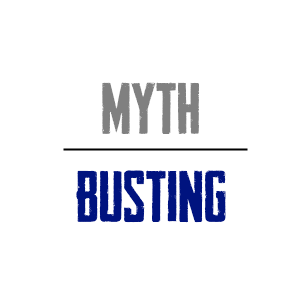This is the third of a ten part series similar to what I did with “The Biggest Myths in Economics”. Many of these will be familiar to regular readers, but I hope to consolidate them when I am done to make for easier reading. I hope you enjoy and please don’t forget to use the forum for feedback, questions, angry ranting or adding myths that you think are important.
Myth # 3 – You Need To Beat The Market
We all want to generate as much return with as little risk as possible. Achieving this is what’s called “alpha” or excess return. So, if the S&P 500 generates a 10% return with an average positive and negative standard deviation of 20 and you generate a 12% return with a standard deviation of 0 then your risk adjusted returns are through the roof. You essentially took a risk free type of return on the way to “beating the market”. While this is obviously desirable there are a number of harsh realities that come with trying to achieve this lofty goal:
- “The market” is a rather opaque concept to begin with. The stock market is just one slice of the world’s financial assets. The US stock market is just a slice of the world’s stock market. So, right off the bat we have a benchmarking problem. Our concept of “the market” often involves significant deviations from the one true “market” portfolio which is comprised of the market cap weightings of the entire world’s financial assets.¹ Unfortunately, most people define “the market” as something like the Dow Jones or the S&P 500. This creates several problems for asset allocators and portfolio managers. The first problem is that most asset allocators probably shouldn’t be fully allocated in the stock market because their risk profile is inappropriate for this level of risk. This can create the urge to try to take even more risk in trying to outperform an already very risky asset allocation. Equally important, portfolio managers who are benchmarked to an all stock index are prone to take levels of risk that are inconsistent with the way their underlying customers view risk. This can result in a conflict of interest between the manager and the customer and usually results in poor performance, higher fees and higher taxes.
- Regardless of how you define “the market”, achieving excess return is incredibly difficult. In fact, 87% of active investment managers have failed to beat their benchmark over the long-term.² Trying to beat the market isn’t difficult because “active” management is good or bad though. It’s simple arithmetic. Think of it like this. In the aggregate we all generate the market return. So, if the market return is 10% on average then we generate the post-fee and post-tax return. Bear in mind that no one incurs the frictionless benchmark return of 10% so this is an unrealistic benchmark from the start. And if your fund manager charges 1% and you incur another 2% in taxes on average then you’re down to 7% in net returns. In other words, you need to generate about 3% in continual excess return on average just to offset the frictions that you’re virtually guaranteed to incur. And the more active you are the more these frictions are magnified as you incur higher taxes and fees. Now, this doesn’t mean that “active” management is necessarily bad. But it does explain why beating the hypothetical benchmark return is so difficult to achieve on a continual basis.
- The biggest problem with trying to “beat the market” is that none of us actually needs to beat the market. While it would be really nice to generate consistent excess return I suspect that “alpha” is not posted on your refrigerator as one of your retirement goals. Most asset allocators just want to generate a return that is going to be consistent with their long-term financial goals. This usually means generating a return that outpaces inflation and doesn’t expose you to excessive negative volatility. Whether this return is in excess of your benchmark is not necessarily that important. If it’s in-line with your personal financial goals then you are achieving your own personal sort of alpha. In this sense it’s more important for investors to generate the appropriate type of return rather than the highest returns.
Trying to beat the market can come with all sorts of potential problems that create conflicts between our financial goals and our asset allocations. And while asset allocation is a necessarily active endeavor we should be mindful of how we are active so that we don’t create benchmarks and goals that are inconsistent with the appropriate goals we should be setting for our savings.
¹ – See, The Global Multi-Asset Market Portfolio 1959-2012 via SSRN.
² – See, 2016 Annual SPIVA report card by S&P
Mr. Roche is the Founder and Chief Investment Officer of Discipline Funds.Discipline Funds is a low fee financial advisory firm with a focus on helping people be more disciplined with their finances.
He is also the author of Pragmatic Capitalism: What Every Investor Needs to Understand About Money and Finance, Understanding the Modern Monetary System and Understanding Modern Portfolio Construction.

